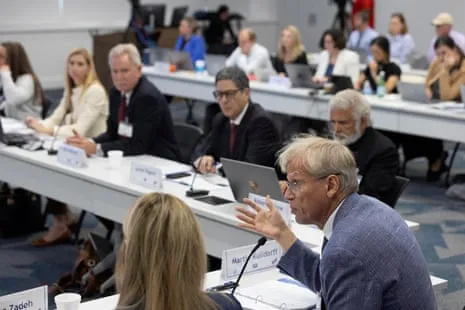Today's Top Highlights
Stay updated with the latest insights and trends in online gaming
News
 READ MORE
READ MORE
The singer-songwriter Embracing Perfectionism – Her Music Benefits for It

Alexandra Reese
19 Sep 2025
News
 READ MORE
READ MORE
The Way Ultra Marathoner Ruth Croft Created a Historic Achievement

Alexandra Reese
19 Sep 2025
News
 READ MORE
READ MORE
Donald Trump Warns TV Networks Following Late-Night Host Fallout

Alexandra Reese
19 Sep 2025
News
 READ MORE
READ MORE
My Significant Other Sees Sex as a Race – How Can Reassure Him?

Alexandra Reese
19 Sep 2025
News
 READ MORE
READ MORE
The Paranormal Mystery Could Kickstart The Director's Horror Movie Path

Alexandra Reese
19 Sep 2025
News
 READ MORE
READ MORE
What is Antifa and why has the Trump administration focusing on them?

Alexandra Reese
19 Sep 2025
News
 READ MORE
READ MORE
Internet Bullies Ridicule Me for Being Less Popular, Leading Fortnite Streamer Ninja Reveals

Alexandra Reese
19 Sep 2025
News
 READ MORE
READ MORE
Finding the Net and Instilling Dread, One Can Confidently State Haaland Is Back at His Finest

Alexandra Reese
19 Sep 2025
News
 READ MORE
READ MORE
The Reasons The French Nation Faces Evolving Into Europe’s Latest Ailing Economy of Europe

Alexandra Reese
19 Sep 2025
News
 READ MORE
READ MORE
Newcastle's boss Commends Team's Heart – Yet That Only Carries Them So Far

Alexandra Reese
19 Sep 2025
News
 READ MORE
READ MORE
The Lady from the Sea Review – Andrew Lincoln Headline a Stunning Modern Take

Alexandra Reese
19 Sep 2025
News
 READ MORE
READ MORE
English Top Flight: Ten Key Aspects to Watch Over the Coming Days

Alexandra Reese
19 Sep 2025
September 2025 Blog Roll
August 2025 Blog Roll
July 2025 Blog Roll
June 2025 Blog Roll
Popular Posts
Sponsored News

News
US Senate Greenlights Nearly 50 Trump Nominees Following Recently Adopted Majority Rules
 Alexandra Reese
| 19 Sep 2025
Alexandra Reese
| 19 Sep 2025

News

News
The governing authority prohibit publications authored by female authors from the nation's colleges
 Alexandra Reese
| 19 Sep 2025
Alexandra Reese
| 19 Sep 2025

News

News
US Health Committee Recommends Separate Injections against Mumps Rather than Single Vaccine
 Alexandra Reese
| 18 Sep 2025
Alexandra Reese
| 18 Sep 2025

News





